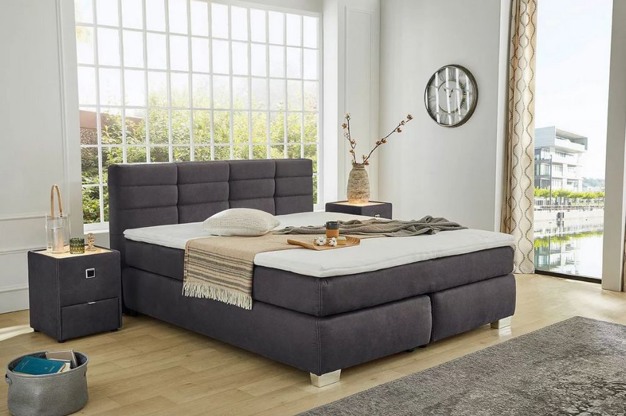When choosing a mattress, understanding the key differences between types can help you find the right one for your needs. Here’s an overview of the most common types of mattresses and how they differ:
1. Innerspring Mattresses
- Structure: Made with steel coils for support, usually topped with a thin layer of padding.
- Feel: Firm and bouncy, offering strong support and airflow.
- Best for: People who prefer a traditional mattress feel, back sleepers, or those looking for better cooling.
- Drawbacks: May lack contouring and motion isolation compared to other types.
2. Memory Foam Mattresses
- Structure: Made entirely of foam, often with multiple layers of varying density.
- Feel: Contours to the body, providing excellent pressure relief and motion isolation.
- Best for: Side sleepers, couples, and people with joint pain or pressure point issues.
- Drawbacks: Can retain heat (though newer models often have cooling features) and may feel too soft for some.
3. Hybrid Mattresses
- Structure: Combine innerspring coils with layers of foam or latex.
- Feel: Offer a balance of support and comfort, combining the bounce of coils with the contouring of foam or latex.
- Best for: Those who want the benefits of both innerspring and foam mattresses, including support and comfort.
- Drawbacks: Can be more expensive and heavier than other options.
4. Latex Mattresses
- Structure: Made from natural or synthetic latex, offering a responsive and bouncy feel.
- Feel: Firm yet contouring, with good support and durability.
- Best for: Eco-conscious buyers (natural latex options), people who want a cooling and hypoallergenic mattress.
- Drawbacks: Expensive and heavier than other types.
5. Airbeds
- Structure: Use air chambers as the primary support system, often adjustable for firmness.
- Feel: Customizable firmness on demand; some models offer different settings for each side.
- Best for: Couples with differing firmness preferences or those with specific medical needs.
- Drawbacks: Expensive and can require more maintenance.
6. Pillow-Top Mattresses
- Structure: Feature a thick, soft layer sewn onto the top of an innerspring or foam mattress.
- Feel: Plush and luxurious, adding extra comfort to firm mattresses.
- Best for: People who enjoy a soft sleeping surface but need underlying support.
- Drawbacks: Can wear out faster and may not provide sufficient support for heavier sleepers.
7. Futon Mattresses
- Structure: Thin, foldable mattresses typically made of foam, cotton, or polyester blends.
- Feel: Firm and compact, designed for multifunctional furniture like futon frames.
- Best for: Small spaces, guest rooms, or those who prioritize portability.
- Drawbacks: Not ideal for daily, long-term use due to limited support.
- Sleeping Position: Side sleepers benefit from softer mattresses, back sleepers need medium-firm support, and stomach sleepers often prefer firmer mattresses.
- Firmness Level: Depends on personal preference and body weight.
- Temperature Regulation: Hot sleepers should prioritize mattresses with cooling features.
- Budget: Prices range widely, so set a budget that matches your needs and priorities.
Choosing the Right Mattress:
Consider the following factors when choosing a mattress:

